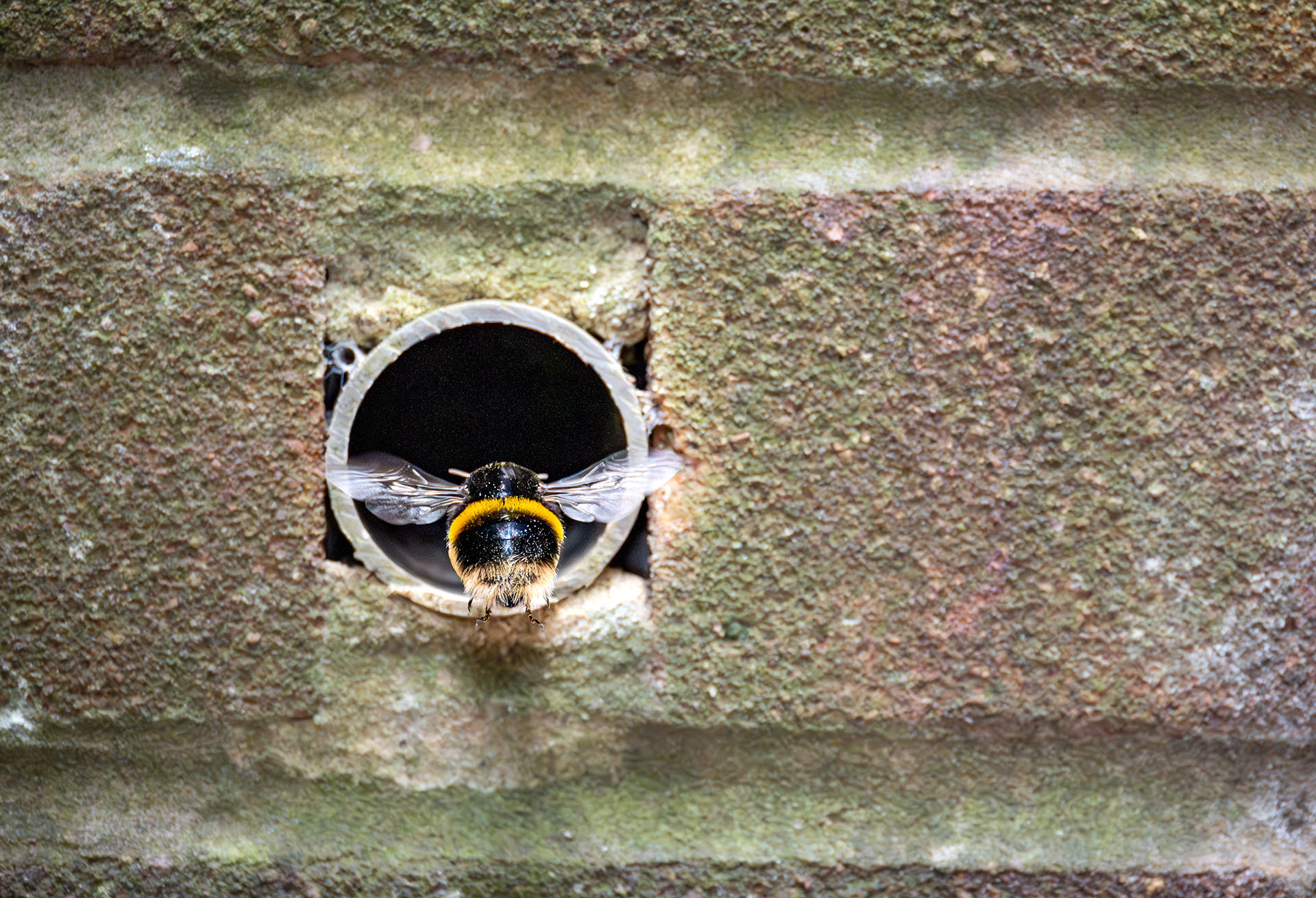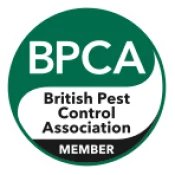
Why Bumble Bees Matter
Bumble bees are essential pollinators, playing a key role in sustaining plant life and food crops. With 24 species in the UK such as buff-tailed, red-tailed and garden bumble bees, these gentle insects are vital to our ecosystem. Unlike wasps, bumble bees rarely sting unless provoked, and their nests are temporary, lasting just a few months.
At iX5 Pest Control, we prioritise humane removal and relocation or mitigation, not extermination. Wherever possible, our goal is to protect both people and pollinators.
Bumble Bee Behaviour Through the Seasons
Understanding bumble bee activity throughout the year can help determine whether a nest needs professional attention or is safe to leave undisturbed.
Season | Bee Activity |
Spring | Queens emerge from hibernation and search for a nesting site. |
Early Summer | Colonies grow rapidly as worker bees forage for nectar and pollen. |
Late Summer | New queens and males are born; the original colony begins to decline. |
Autumn | Most bees die off; new queens hibernate ready to restart the cycle next spring. |
Nests naturally die off around mid to late summer—often without needing intervention.
iX5 Pest Control
- 7 Days A Week Service
- Weekend & Evening Appointments
- Domestic & Commercial Pest Control
- Contactless Payment Methods
- Free Initial Survey
Additional Services
Common Bumble Bee Nesting Areas
You may find nests in:
- Old rodent burrows or cavities underground,
- Compost heaps or beneath decking,
- Lofts, bird boxes or inside garden sheds,
- Under paving slabs or inside wall cavities.
Bumble bee nests are usually made up of insulating materials like fur, grass, or mineral fibre insulation. If undisturbed, they rarely pose a risk—but if located near frequent human activity, they can cause concern.
Why Humane Removal Matters
Bumble bee populations are in decline across the UK, largely due to habitat loss and pesticide use. As important pollinators, they contribute directly to our food supply and the health of natural habitats.
That’s why iX5 Pest Control:
- Prioritises relocation over destruction,
- Carries out removals safely, ethically and with minimal disruption,
- Works with local wildlife principles to support pollinator conservation,
- Advises on long-term prevention and how to make your space less attractive to nesting bees.
We believe in a balanced approach—protecting both people and pollinators whenever possible.
Our Bumble Bee Removal Process
- Survey & Identification
We inspect the area to confirm the species and determine whether the nest poses a genuine risk. - Risk Assessment
We evaluate potential hazards—especially for children, pets or high-traffic areas. - Relocation or Removal
Where safe and legal, we relocate nests to suitable outdoor environments, but we can only do this where a nest is accessible. Removal and relocation is only carried out when no alternative mitigation is possible. - Prevention Advice
We offer practical advice to help you avoid future nesting—such as blocking access points or repositioning attractants like compost bins and bird boxes. Although it is not possible to totally proof a property against insect ingress.
Recent Success Story: Safe Bumble Bee Nest Relocation in Dunstable
We recently completed a successful bumble bee removal at a site in Dunstable, where a nest had developed underneath a portable cabin. The team worked with care and precision to ensure the bees were safely relocated without harming occupants or damaging the structure.
Read the full story here.
This case demonstrates our ongoing commitment to safe, ethical bee management.
Areas We Service
iX5 Pest Control operates throughout: Northampton, Milton Keynes, Daventry, Rugby, Market Harborough, Towcester, Brackley, Wellingborough, Kettering, Corby, Olney
…and surrounding towns and villages.
We offer evening and weekend appointments at no extra cost, with flexible scheduling for domestic and commercial clients.
Need Advice or Assistance?
If you’ve discovered a bumble bee nest near your home or business, contact us for friendly, expert advice. We’ll assess the risk and provide an ethical, effective solution. Call us on 01604 328545, email [email protected] or use our online contact form below.
iX5 Pest Control – Trusted with results!
Get In touch
BUMBLE BEE FAQs
Most frequent questions and answers
What do bumble bees look like?
The mental image of a bumble bee is probably the same for a lot of people worldwide – a round, furry body with black and yellow stripes. However, there are in fact 24 different species of this beautiful insect. They vary in size and colour and without realising it, you’ve more than likely seen a red-tailed, yellow tailed or even a buff-tailed bumble bee!
Do bumble bees make honey?
Bumble bees can make honey, and it is supposedly sweeter tasting than the honeybee’s offering. However, this is not stored in the same way as honeybees do in wax comb, and bumblebees only ever build up a very small supply because they don’t need to store food for the winter. There is not enough to be collected and used by humans.
Where do bumble bees live?
Bumble bees are known to nest underground, often in old mammal burrows or other cavities. They can also be found under rocks or paving slabs, in empty bird boxes, in lofts, or in compost heaps in gardens. The nests quite often resemble a pile of debris because they’re lined with warm materials including animal fur, leaves, litter or even housing insulation.
What do bumble bees eat?
Bumble bees gather pollen and feed it to their young. Because of this, they need to be able to access a range of flowers and plants. They also trap and absorb nectar with the hair on their tongue. If you ever happen to find a bumble bee looking exhausted with no bee friendly flowers around, it helps to feed it a 50/50 mix of white sugar and water which provides a well needed energy boost. It is strongly advised not to give them honey or brown sugar.
Are bumble bees protected?
Over the last century, two species of our native bumble bee became extinct leaving only 24 left. Sadly, eight of these are currently a conservational priority due to a decline in their distribution. Despite this there is no actual legislation in place to protect any bees in the UK.
However, there are lots of conservation steps being taken by various organisations to protect and enhance bee populations generally.
Do bumble bees sting?
Bumble bees can sting you, but the good news is that they’re generally fairly calm and tranquil. It will only be the queen bee and her workers who sting, but that will usually only happen if they feel that they or their nest are under threat. Although you’re not likely to feel too much pain from it, you’ll certainly know that you’ve been stung!
How long do bumble bees live?
The worker bees have a somewhat short life span, often only living for 4-6 weeks. This is why we encourage people to live with them and their nests if they can – they are only around for a very short time over the summer months! The new queens from that season live on to establish new colonies the following season, so they will only be around for just over a year.
Do bumble bees die when they sting?
Unlike their honey making relative, a bumble bee does not die when it stings you. They have a smooth, straight sting rather than a barbed one, which means they’re capable of stinging multiple times. Luckily for us, they’re a rather docile and non-aggressive species.
Do bumble bees hibernate?
Whilst the rest of the colony dies off at the end of the summer, the newly mated queen bumble bees go into hibernation. After filling up on nectar and pollen to build up crucial fat stores for the winter months, they can be found hidden away in array of different places. These hideouts are normally north facing so the winter sun doesn’t disturb their slumber – they might choose loose soil, hollow trees, log piles, lofts or even flowerpots!
Are bumble bees dangerous?
Bumble bees are gentle and easy-going as a rule. But like many creatures, if they feel threatened or feel that their colony is in danger will they sting. If a nest is accidentally disturbed, they may set upon the person responsible. This can often happen when mowing the lawn or tidying up in the garden, shed or garage. They generally pose a low sting risk to humans but it is always best to treat stings immediately (if necessary) and observe them closely in case of allergic reactions.










